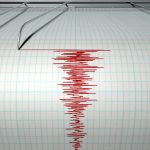Earthquake Early Warning Fundamentals
How earthquake early warnings work in California, Washington, and Oregon.
The development of the Earthquake Early Warning system has been years in the making. Researchers, private parties, and the government realized the many benefits of having a system that would warn people of impeding shaking before it occurs. People can generally protect themselves better with a simple notification that will let them know when the shaking will begin in their particular area.
In order to use the system effectively, it will be helpful to have a general idea of how the Earthquake Early Warning system actually works.
- The network of seismic sensors detects energy from the impeding earthquake. As part of the project, seismic sensors have been installed in various locations in California, Washington, and Oregon. These sensors are constantly checking for energy that signifies an earthquake—P-wave energy.
- The seismic sensors pinpoint the location of the earthquake’s epicenter. Knowing where the earthquake originated will help determine the locations that will experience the shaking first. The Earthquake Early Warning system will attempt to notify the closest people to the epicenter first.
- The sensors quickly predict the magnitude of the earthquake. Being able to predict that magnitude of the earthquake is crucial. Some earthquakes will not require a mass notification because they are small. Other earthquakes will be so large that they could cause serious damage. The sensors will determine the magnitude so it can send out the appropriate warning.
- Estimate the timing of the shaking. Once the sensors gather all of the information on the location and magnitude, the Earthquake Early Warning system will estimate when the shaking will begin in virtually any area. The system computes when the S-waves will arrive at a particular location. These waves are the type that usually cause most of the damage associated with earthquakes.
- Send out the warning. Warnings will be quickly distributed to emergency response teams, hospitals, public transportation systems, schools, private businesses, and the general public. These warnings may be seconds or minutes ahead of the shaking, depending on the earthquake’s location and magnitude.
This warning system has not been completed yet, but several other countries, such as Japan, Taiwan, and Mexico, have implemented similar systems that have been very successful. Right now, the United States Geological Survey has only installed a small number of sensors, but that number will increase as funding is received. Once the Earthquake Early Warning system is fully functional, it will be a tremendous resource for everyone in California, Washington, and Oregon.




